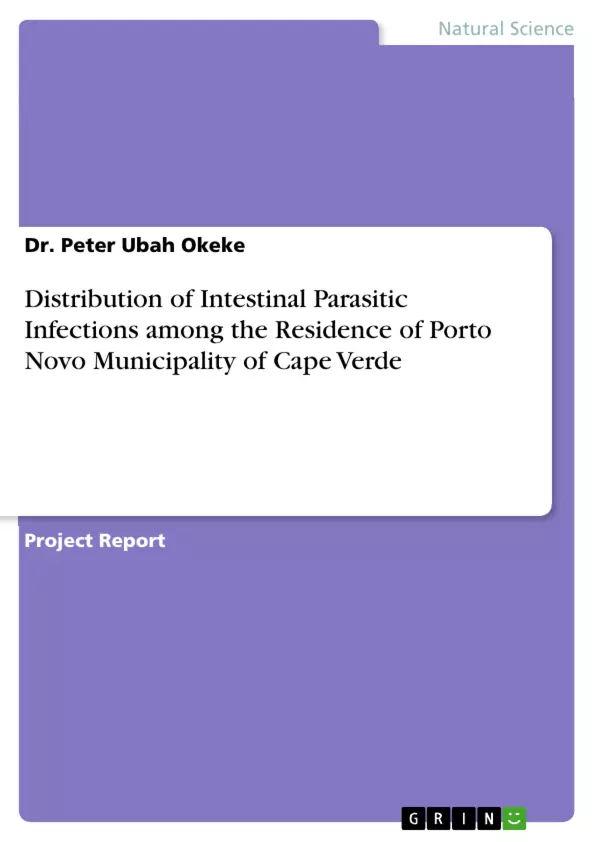BACKGROUND: Intestinal parasitic diseases are among the most common diseases globally and for this reason, it is very important to study its occurrence and its degree of risk in contamination. No previous record is available in the municipality of Porto Novo, hence the necessity of this study.
AIMS: To obtain the occurrence of common intestinal parasites among the inhabitants of Porto Novo municipality.
Stool testing performed on 391 subjects between March to June, 2011 age ranging from 11 months to 82 years old, 141 (36.06%) were infected with one or more of the intestinal parasites. Among protozoa, Entamoeba coli (22.51%), Entamoeba Histolytica/Dispar (7.67%) and Giardia Lamblia (5.90%) were the most isolated intestinal parasites and among the helminths, Hymenolepis nana (2.30%), Ancylostoma Duodenale (1.28%) and Trichuris Trichuria (0.51%) were isolated. Age distribution did not show a definite pattern of infectivity rather females (24.60%) were mainly infected than males (11.50%).
Hence, concluded that intestinal parasites pose a serious public health problem in the municipality of Porto Novo and that its degree of contamination is still high, therefore, treatment measures, National deworming programs at schools and sanitary improvement strategies is advocated for the population of the municipality to reduce and or eradicate this sporadic problem.
Inhaltsverzeichnis (Table of Contents)
- ABSTRACT
- INTRODUCTION
- MATERIALS AND METHODS
- RESULTS
- DISCUSSION AND CONCLUSION
- REFERENCES
Zielsetzung und Themenschwerpunkte (Objectives and Key Themes)
This study aimed to investigate the prevalence of common intestinal parasites among the residents of Porto Novo municipality in Cape Verde. The research aimed to understand the scope of this public health concern and identify potential solutions for its control.
- Prevalence of Intestinal Parasites in Porto Novo
- Public Health Implications of Intestinal Parasites
- Demographic and Social Factors Related to Infection
- Strategies for Control and Prevention
- Comparison with Other Regions
Zusammenfassung der Kapitel (Chapter Summaries)
- ABSTRACT: Provides an overview of the study's background, aims, methods, results, and conclusions. Highlights the prevalence of intestinal parasites in Porto Novo and emphasizes the need for public health interventions.
- INTRODUCTION: Discusses the nature of parasitism, highlighting different types of hosts and parasites, and their impact on human health. It emphasizes the importance of understanding the epidemiology of gastrointestinal parasites and their impact on vulnerable populations.
- MATERIALS AND METHODS: Details the methodology used for the study, including the sampling process, the number of participants, the age range, the period of the study, and the methods used to identify and analyze intestinal parasites.
- RESULTS: Presents the findings of the study, including the specific types of parasites identified, their prevalence, and the distribution of infection across different demographic groups.
Schlüsselwörter (Keywords)
The key terms for this study include: intestinal parasites, Porto Novo, Cape Verde, prevalence, public health, epidemiology, control, prevention, demographic factors, socioeconomic factors, geohelminths, protozoa, Entamoeba coli, Entamoeba Histolytica/Dispar, Giardia Lamblia, Hymenolepis nana, Ancylostoma Duodenale, Trichuris Trichuria.
- Quote paper
- Dr. Peter Ubah Okeke (Author), 2012, Distribution of Intestinal Parasitic Infections among the Residence of Porto Novo Municipality of Cape Verde, Munich, GRIN Verlag, https://www.grin.com/document/194273



